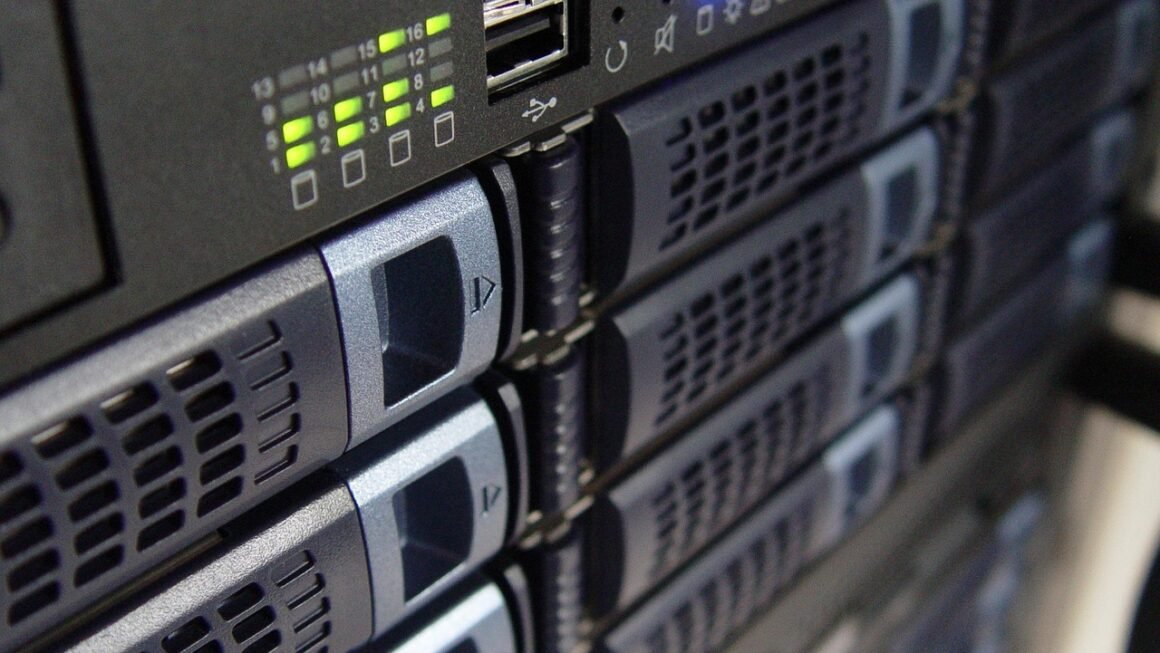Imagine a world without smartphones, advanced medical equipment, or even efficient household appliances. Impossible, right? Semiconductors are the unsung heroes powering virtually every aspect of modern life, driving innovation and shaping the future of technology. From the simplest transistor to the most complex integrated circuit, these tiny components are the foundation of the digital age. Let’s dive into the fascinating world of semiconductors and explore their significance.
What are Semiconductors?
Defining Semiconductors
Semiconductors are materials that have an electrical conductivity value falling between that of a conductor (like copper) and an insulator (like glass). This unique property allows them to control the flow of electrical current, making them essential for electronic devices. Think of them as sophisticated switches that can turn electricity on or off, amplify signals, or perform complex calculations.
Common Semiconductor Materials
The most widely used semiconductor material is silicon (Si), due to its abundance, cost-effectiveness, and suitable electronic properties. Other materials used include:
- Germanium (Ge): An early semiconductor material, still used in some niche applications.
- Gallium Arsenide (GaAs): Offers higher electron mobility than silicon, making it suitable for high-frequency applications.
- Silicon Carbide (SiC): Used in high-power, high-temperature applications due to its robustness.
The Importance of Doping
The conductivity of a semiconductor can be precisely controlled by introducing impurities in a process called doping. This involves adding small amounts of other elements, either:
- N-type doping: Adding elements like phosphorus, which have more electrons than silicon, creates an excess of electrons (negative charge carriers).
- P-type doping: Adding elements like boron, which have fewer electrons than silicon, creates “holes” (positive charge carriers).
By controlling the concentration and type of dopants, engineers can create specific electrical characteristics within the semiconductor material. This is crucial for building transistors and other electronic components.
How Semiconductors Work: Transistors and Integrated Circuits
The Transistor: The Building Block
The transistor is the fundamental building block of modern electronics. It acts as a switch and an amplifier. There are two main types:
- Bipolar Junction Transistors (BJTs): Control current between two terminals based on the current applied to a third terminal.
- Field-Effect Transistors (FETs): Control current between two terminals based on the voltage applied to a third terminal. FETs are more commonly used today, particularly MOSFETs (Metal-Oxide-Semiconductor FETs).
Integrated Circuits (ICs): Complexity on a Chip
Integrated Circuits, also known as microchips or chips, are complex networks of interconnected transistors and other components fabricated on a single piece of semiconductor material. They enable incredibly complex functions in a small space. Examples include:
- Microprocessors (CPUs): The “brain” of a computer, responsible for executing instructions.
- Memory Chips (RAM, ROM): Store data and instructions for computers.
- Application-Specific Integrated Circuits (ASICs): Designed for specific tasks, like graphics processing (GPUs) or networking.
The complexity of ICs has increased dramatically over time, following Moore’s Law, which predicted that the number of transistors on a microchip would double approximately every two years. While Moore’s Law is slowing down, innovation continues to push the boundaries of chip design and manufacturing.
Applications of Semiconductors in Various Industries
Computing and Electronics
Semiconductors are the lifeblood of the computing and electronics industries.
- Computers: From personal computers to supercomputers, semiconductors power the processors, memory, and other essential components.
- Smartphones and Tablets: Smartphones are essentially handheld computers, relying heavily on powerful semiconductor chips.
- Consumer Electronics: Televisions, gaming consoles, and other consumer electronics all utilize semiconductors for processing, display, and control functions.
Automotive Industry
The automotive industry is increasingly reliant on semiconductors for:
- Engine Control Units (ECUs): Manage engine performance, fuel efficiency, and emissions.
- Advanced Driver-Assistance Systems (ADAS): Enable features like adaptive cruise control, lane departure warning, and automatic emergency braking.
- Electric Vehicles (EVs): Semiconductors are crucial for battery management systems, power electronics, and motor control.
Healthcare
Semiconductors play a vital role in medical devices and equipment:
- Medical Imaging: MRI, CT scanners, and X-ray machines rely on semiconductors for image processing and data acquisition.
- Patient Monitoring: Wearable sensors and monitoring devices use semiconductors to track vital signs and provide real-time data.
- Diagnostic Equipment: Lab equipment and diagnostic tools utilize semiconductors for precise measurement and analysis.
Renewable Energy
Semiconductors are essential for renewable energy technologies:
- Solar Panels: Photovoltaic (PV) cells convert sunlight into electricity using semiconductor materials.
- Wind Turbines: Semiconductors are used in power inverters to convert the variable frequency AC power generated by wind turbines into grid-compatible electricity.
- Energy Storage: Battery management systems rely on semiconductors to control charging, discharging, and monitoring of battery performance.
The Semiconductor Manufacturing Process
Wafer Fabrication
Semiconductor manufacturing is a highly complex and precise process. It starts with:
- Silicon Wafer Production: Silicon is extracted from sand, purified, and grown into large single-crystal ingots. These ingots are then sliced into thin wafers.
- Photolithography: A light-sensitive material (photoresist) is applied to the wafer surface, and a mask containing the circuit pattern is used to expose specific areas to ultraviolet (UV) light.
- Etching: The exposed areas of the photoresist are removed, and the underlying silicon is etched away, creating the desired circuit pattern.
- Doping: Impurities are introduced into specific areas of the wafer to create n-type and p-type regions, forming transistors and other components.
- Metal Deposition and Interconnection: Thin layers of metal are deposited onto the wafer surface to create conductive pathways that connect the transistors and other components.
Packaging and Testing
After wafer fabrication, the individual chips are:
- Diced: The wafer is cut into individual chips or dies.
- Packaged: Each die is encapsulated in a protective package, which provides mechanical support and electrical connections.
- Tested: The packaged chips are rigorously tested to ensure they meet performance specifications.
The entire manufacturing process takes place in ultra-clean environments to prevent contamination, which can damage the delicate circuitry.
Challenges and Future Trends in the Semiconductor Industry
Increasing Complexity and Cost
- Shrinking Transistor Size: Continuing to shrink transistor size is becoming increasingly challenging and expensive.
- Advanced Manufacturing Techniques: New manufacturing techniques like extreme ultraviolet (EUV) lithography are required for advanced chip designs, but they are extremely complex and costly.
- Supply Chain Vulnerabilities: The global semiconductor supply chain is highly complex and concentrated in a few regions, making it vulnerable to disruptions.
Emerging Technologies
- Quantum Computing: Uses quantum-mechanical phenomena to solve complex problems that are intractable for classical computers. Semiconductors are crucial for building and controlling qubits (quantum bits).
- Neuromorphic Computing: Mimics the structure and function of the human brain, offering the potential for more efficient and powerful AI systems.
- Wide Bandgap Semiconductors: Materials like silicon carbide (SiC) and gallium nitride (GaN) offer superior performance in high-power, high-temperature applications, enabling more efficient power electronics.
Geopolitical Considerations
- National Security: Semiconductors are considered critical infrastructure, and governments are investing heavily in domestic manufacturing capabilities to ensure national security.
- Trade Conflicts: Trade tensions between countries can disrupt the semiconductor supply chain and limit access to advanced technologies.
Conclusion
Semiconductors are the bedrock of the modern world, powering everything from smartphones to supercomputers and playing a vital role in diverse industries. While the industry faces challenges such as increasing complexity, cost, and geopolitical considerations, ongoing innovation continues to push the boundaries of what’s possible. As technology advances, semiconductors will undoubtedly remain at the forefront, driving progress and shaping the future. Understanding the significance of these tiny but mighty components is crucial for navigating the increasingly digital landscape.



